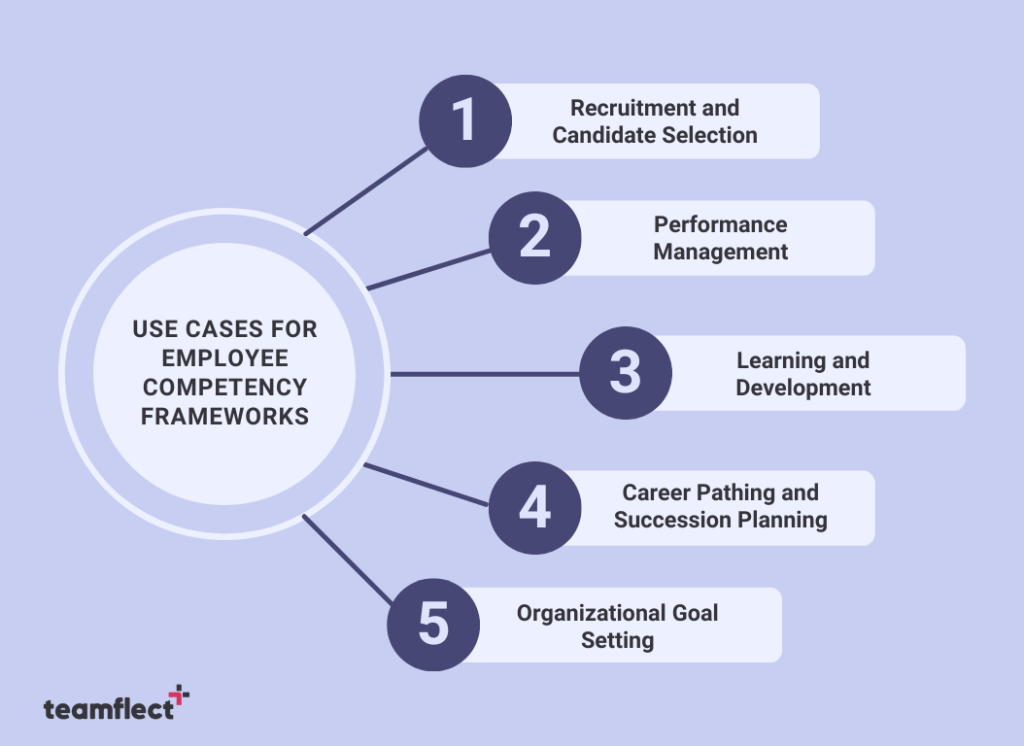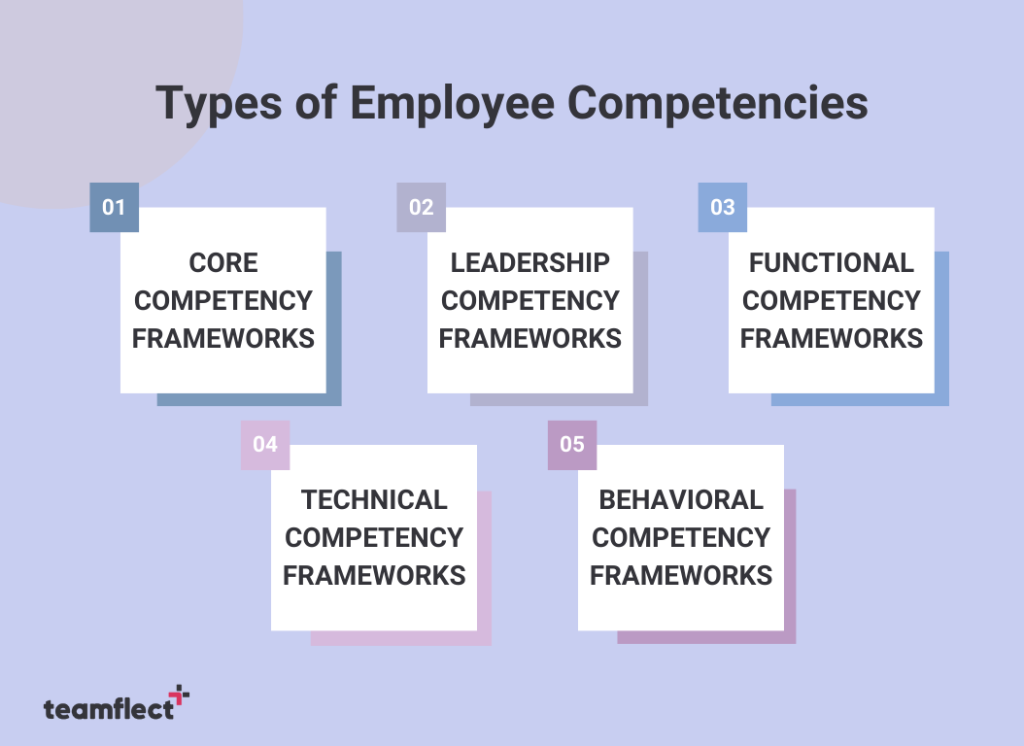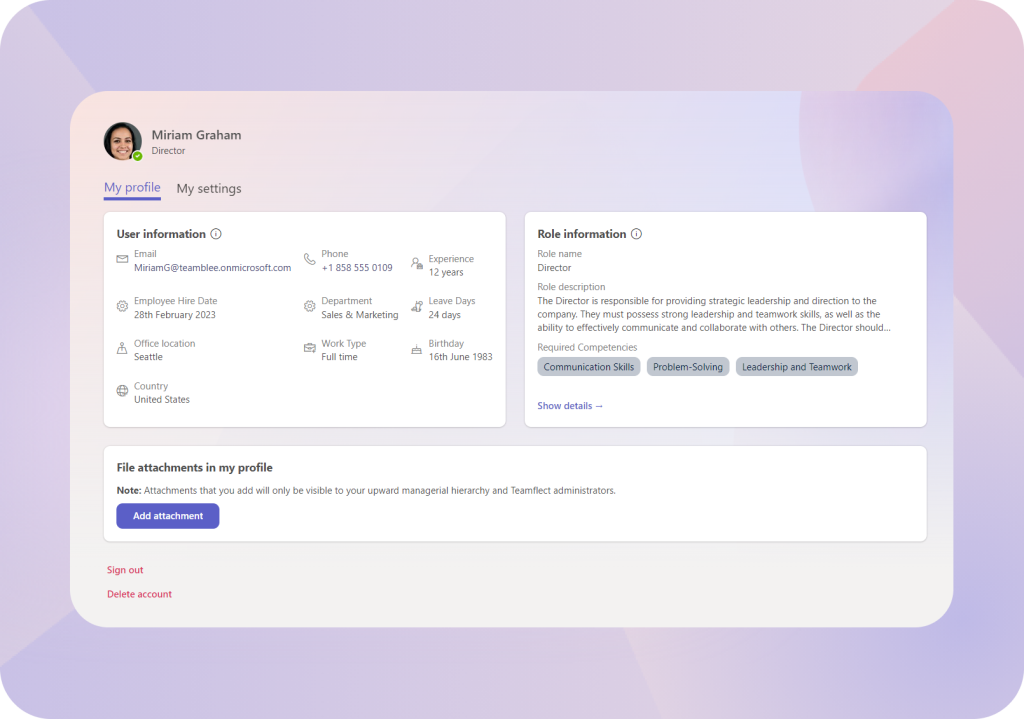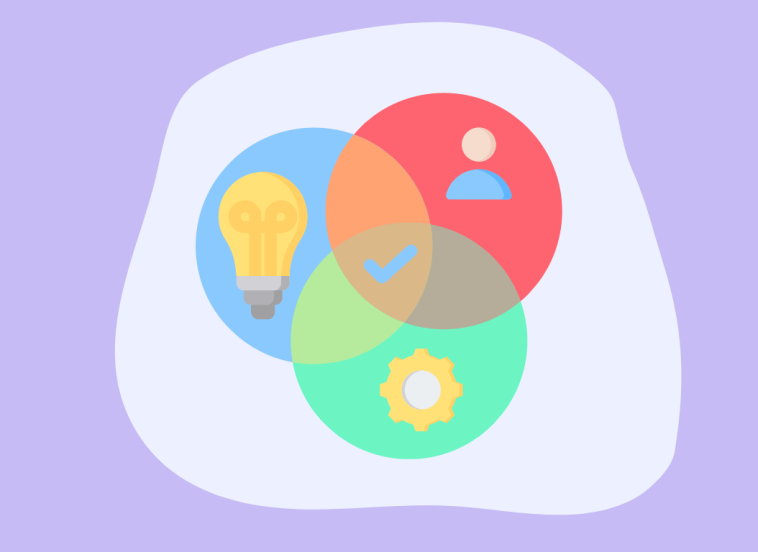Implementing an employee competency framework can make or break any organization’s employee development and talent management efforts.
That is why we wanted to put together the most comprehensive guide to how you can develop your own employee competency framework model.
In this post, we will cover areas such as the definition of a competency framework, determining the right competencies, different types of competency frameworks as well as some sample employee competency framework models!
Table of Contents
What Is An Employee Competency Framework?
An employee competency framework, sometimes referred to as a competency model, is an outline of all the necessary and specific competencies employees must possess in order to perform their designated roles effectively.
The term competency itself has a rather wide definition. When examined more carefully, the word competency more often than not refers to skills, knowledge, behaviors, and attitudes.
That being said if a manager wants to designate other variables to what they deem the core competencies for a position, it is absolutely their prerogative.
Competency frameworks provide a structure to all the necessary requirements of a role and by clearly defining them, organizations can make great strides in talent mapping and goal alignment.
It is absolutely vital for the set of competencies possessed by a team to align with organizational goals, values, and culture.
Building a competency model allows companies to build organizational strategies around their talent, practice succession planning effectively, and develop individual development plans more accurately.
Determining Competencies For A Framework
What are the essential competencies for an employee to excel at a certain role? This is the question that needs to be asked when developing an employee competency model. Competencies themselves can be separated into various types. Some of the most commonly agreed upon competency types are:
- Skills: Practical abilities that employees need to perform tasks effectively.
- Knowledge: The understanding or information employees must have to carry out their job functions.
- Behaviors: The actions or reactions of employees in various situations, reflecting how they apply their skills and knowledge in the workplace.
- Attitudes: The mindset or disposition employees need to possess to contribute positively to the work environment and organizational culture.
What Are The Potential Use Cases For Employee Competency Models?

Competency frameworks are great role-players in the world of human resources and talent management. Once a set of competencies is determined and an employee competency model is framed, it can have the following applications.
Recruitment and Candidate Selection
One of the most obvious applications for an employee competency framework is recruitment and candidate selection, which would be an HR competency. Whether an organization is recruiting externally or interviewing internal candidates, outlining the necessary competencies for a role in a comprehensive competency model helps achieve a strategic alignment between organizational goals and skills.
Performance Management
Competency frameworks provide a clear basis for evaluating employee performance, identifying areas of strength, and pinpointing development needs. When determining the key performance indicators or metrics before performance appraisals, outlining the necessary competencies an employee is expected to have or develop enhances the entire performance review cycle.
Learning and Development
Ensuring continuous organizational learning should be on the agenda of any chief people officer worth their salt. However, before diving head-first into learning management systems and online courses, all the necessary competencies that are expected to be gained at the end of all this investment into organizational learning have to be outlined in an employee competency model.
Career Pathing and Succession Planning
Beyond the shadow of a doubt, employees perform at a much higher level when they know there isn’t a glass ceiling above them and that there is room for upward mobility. A massive part of career pathing and succession planning is the employees in an organization being able to see themselves in higher roles in the future. Being aware of the competencies required for those roles is a great step in the right direction.
Organizational Goal Setting
One of the key benefits of an employee competency framework is its ability to align individual employee development with the broader objectives of the organization. Having a detailed outline, model, or framework of all the competencies required for each role gives leaders of all departments the sense of where everyone fits in the big picture and how goals can be set more effectively to complement everyone’s competencies and vice versa.
Types Of Competency Frameworks
In the same way competencies themselves can be divided into sub-categories such as skills, attitudes, knowledge, and behaviors, so can the different types of competency frameworks.
The way organizations are structured today and how volatile the world of work is, roles and job descriptions are now more complicated than ever. A single role requires multiple sets of skills.
As complex as the roles and responsibilities in an organization are today, the people working those roles are even more so! For that reason, there are multiple different types of competency frameworks.

1. Core Competency Frameworks
Core competency frameworks focus on the essential skills, behaviors, and attitudes that every employee, regardless of their role or level, should possess to contribute effectively to the organization’s success.
These competencies are integral to the company’s identity and values, underpinning its culture and operational ethos.
Examples of core competencies include:
- Effective communication
- Team collaboration
- Problem-solving
- Adaptability
- Customer focus
2. Leadership Competency Frameworks
This type of framework is designed specifically for individuals in leadership or managerial roles or at the very least, managerial aspirations.
Leadership competency frameworks outline the key skills and behaviors needed to lead teams, drive strategy, and manage organizational change effectively.
Common leadership competencies include:
- Strategic thinking
- Decision-making
- Emotional intelligence
- Inspiring and motivating others
- Conflict resolution
3. Functional Competency Frameworks
Functional or job-specific competency frameworks focus on the specific competencies required for success in specific roles or job families.
These frameworks are tailored to the unique demands of different functions within the organization, such as sales, marketing, finance, or IT. While there are many correlations between different leadership or core competencies, functional competencies vary between different roles.
For example, a functional competency for a sales role might include:
- Client relationship management
- Negotiation skills
- Market analysis
4. Technical Competency Frameworks
Technical competency frameworks are similar to functional frameworks but are more focused on the specific technical skills and knowledge required in certain roles, particularly in fields like engineering, IT, or data science.
These competencies are often more quantifiable and can include proficiencies in specific software, programming languages, or technical methodologies.
An example of a technical competency might be:
- Proficiency in Python programming for a data analyst role
Technical frameworks are crucial for roles where specialized technical skills are essential for operational success and innovation.
5. Behavioral Competency Frameworks
Behavioral competency frameworks emphasize the behaviors and attitudes employees should exhibit in the workplace. A behavioral competency framework often focuses on how employees approach their work, interact with others, and align with the organization’s culture and values.
Keeping track of how everyone is aligned with the behavioral competency framework can have long-lasting effects on key metrics such as employee engagement, employee retention, and employee attrition.
Examples of behavioral competencies include:
- Resilience
- Integrity
- Proactivity
Competency Framework Examples
Now that we’ve clearly defined what an employee competency framework clearly is, alongside how each competency can be mapped out for different roles it’s time for some examples.
Below you will find employee competency framework examples for different positions. If you are recruiting for a new opening or simply establishing new employee competency models for your organization, you might find the examples below helpful.
In this post, we will cover employee competency framework examples for customer service representatives, software developers, and sales managers.
These competency framework examples were selected because they represent positions with very different and specific competencies required of them. We hope they serve as guides while you create your own competency frameworks.
Competency Framework Example 1: Customer Service Representative
Core Competencies:
- Communication: Effectively articulates information and listens actively to customer needs.
- Problem-solving: Quickly identify and resolve issues to ensure customer satisfaction.
Functional Competencies:
- Product Knowledge: Understand the details and benefits of all products to provide accurate information to customers.
- CRM Software Proficiency: Utilize customer relationship management software to track customer interactions and issues.
Behavioral Competencies:
- Patience: Remain calm and understanding with customers, even in challenging situations.
- Empathy: Demonstrate an ability to understand and share the feelings of customers.
Competency Framework Example 2: Software Developer
Core Competencies:
- Analytical Thinking: Evaluate complex problems and develop software solutions.
- Continuous Learning: Stay updated with the latest programming trends and technologies.
Functional Competencies:
- Coding Proficiency: Expertise in relevant programming languages (e.g., Java, Python).
- Debugging Skills: Ability to identify and fix code errors efficiently.
Behavioral Competencies:
- Attention to Detail: Ensure precision and accuracy in all coding and development tasks.
- Collaboration: Work effectively with team members on software projects.
Competency Framework Example 3: Sales Manager
Core Competencies:
- Strategic Planning: Develop effective sales strategies to achieve revenue targets.
- Negotiation: Skillfully negotiate deals to maximize profits and satisfy customer needs.
Functional Competencies:
- Market Analysis: Understand market trends and adjust sales tactics accordingly.
- Sales Forecasting: Accurately predict future sales and set realistic goals.
Leadership Competencies:
- Team Leadership: Inspire and lead the sales team to achieve business objectives.
- Performance Management: Evaluate and enhance team members’ performance through constructive feedback.
Behavioral Competencies:
- Resilience: Stay motivated and persistent, even when faced with setbacks.
- Integrity: Uphold ethical standards and honesty in all sales practices.
How To Use Employee Competency Frameworks Effectively?
Engage all relevant parties continuously
Nobody knows the unique responsibilities, challenges, and competencies required of a position better than those involved in the actual role.
That is why you need to involve a diverse group of stakeholders in the development process, including leaders, HR professionals, and employees from various levels and functions.
Seek input and feedback to ensure the competency framework reflects the actual competencies needed for success in various roles and is aligned with the organization’s strategic objectives.
Have a strong digitized employee network and database

The best way to integrate your competency framework into your day-to-day HR practices and organizational strategy, in the long run, is to digitize the entire process.
To help you do just that, you can take advantage of the best performance management software in the Microsoft Teams ecosystem, Teamflect.
Teamflect not only lets you create competency frameworks around different positions and job descriptions but also lets you integrate those competencies into every step of the performance management cycle through performance reviews, feedback, development goals, and more!



